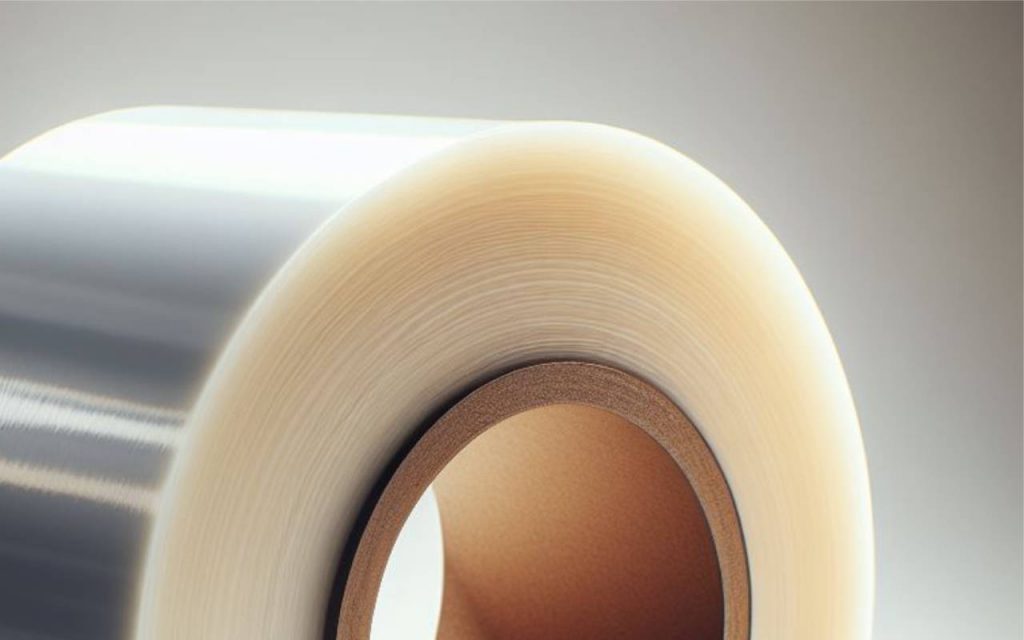Banding film (also called collation film) is a narrow roll of polythene single wound sheeting, designed to bundle items together. As a stretch banding film, it can be used to wrap light pallet loads or to stabilise a load before applying a full stretch film.
It can also be used to keep print stock bound, or as complete packaging for soft, loose items – things like socks and table runners, as examples.
Banding film is super easy to use as a hand-held, manually applied packaging support system. It provides tension and security, without the risk of cutting into boxes or applying too much force – unlike rigid PET pallet strapping. Banding film is flexible but retains tension, like an elastic band. This easily holds lighter loads together and in place.
While it’s often used as a manual packaging film, it’s just as happy to be used in automated packaging lines to bundle items together, or in highly specialised packaging systems, where it is sealed into loops to tightly bind products together. This is a kind of machine film derived from SWS, but often requires a specific blend to work consistently in the applied setting.

The benefits of using banding film
In manual operations, banding film is a massive time and resource saver. Instead of using more shrink or stretch wrap than you normally would, banding film can do the job with far less waste – and much quicker.
Securing and pre-packaging lighter pallet loads is a prime example of this. Loads can be bound quickly by hand, using minimal material and time. These bundles can later be loaded onto a pallet quickly, wrapped fully, and sent on their way – and at their destination, they’ll be far easier to unpack and distribute.
Read more: How Much Can You Load On A Pallet?
But as we’ve mentioned already, it’s not just for securing loads; banding film can be fine-tuned into an automated system or even used as a standalone packaging system.
Let’s explain how we used a custom blend of LLDPE polythene to create a new kind of banding film for an overseas client.
Case study – creating a custom polythene banding film
One of our overseas clients was experiencing major issues with their polythene banding film. Their machine technician was reporting that their current film had poor sealing performance, broke easily and was contributing massively to machine downtime – all of which was costing the firm money.
We had a solution, though – a custom banding film made from LLDPE that we had developed during our decades of manufacturing polythene films. This unique blend of polymers was ideally suited to their application, so we arranged to send samples out to the client while their technician was on-site.
Our custom blended polythene banding allows consistent sealing properties. This is achieved by allowing the polythene to cool fully before being converted into banding machine-ready rolls. This keeps the film tension constant, and eliminates film breakages.
This instantly solved the issues they were having with their machine film – saving the company time, money and significantly increasing machine uptime and output.
Banding film makes packaging easier
We’ve been developing and manufacturing polythene films in the UK since 1968. Being a UK manufacturer means we can provide fully customised packaging solutions, mixing the masterbatch as you need – to create new blends based on your specifications.
Our polythene collation and banding film is no different. If you’re experiencing issues with your machine film – like poor sealing, breakages and machine downtime as a result – call us on 01773 820415 to find out how we can help. Or, if you’re ready to order – Get a quote now.


